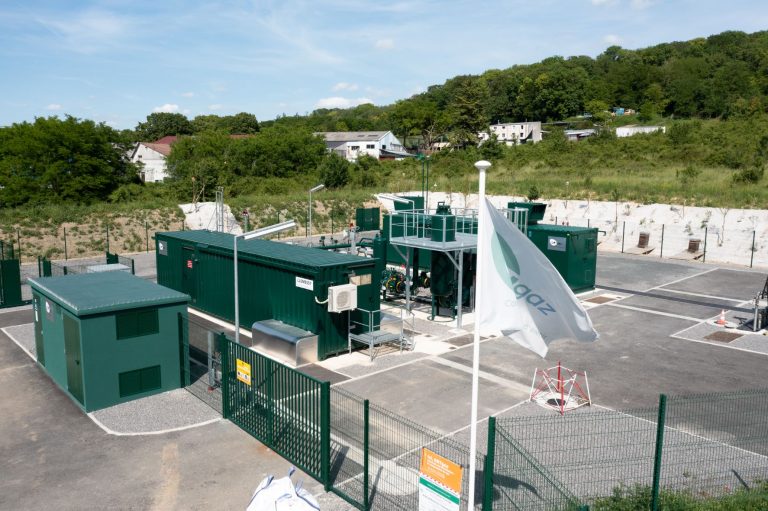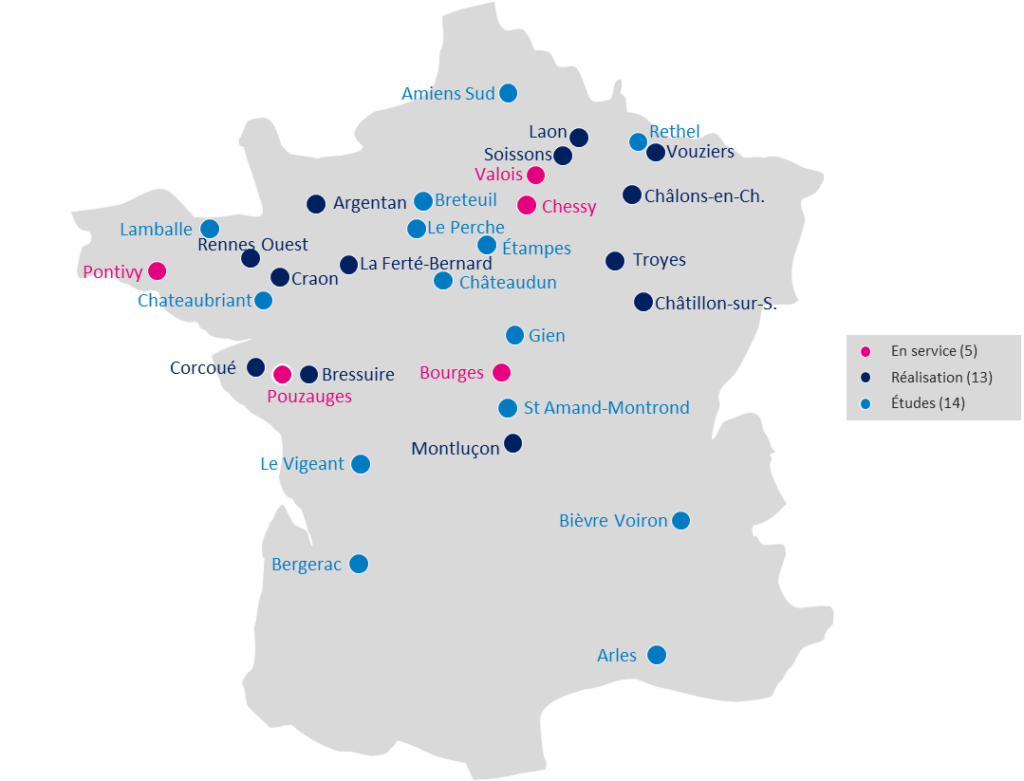
For many years, RICE has developed its expertise in network simulation and modelling, which can be applied to various fields. Since 2017, RICE has been carrying out feasibility and sizing dynamic studies for each Distribution/Transmission reverse flow project. The method used has been gradually improved. In 2021 this method was validated thanks to the comparison between measurements on the first french reverse flow at Pontivy and simulations carried out by RICE.
An increase in the number of backhaul projects on French territory since 2019|Simulations carried out by RICE and GRDF to simulate and optimise the use of reverse flows |A successful comparative study between the dynamic simulation software and the measurements in PontivyThe biomethane sector is expanding rapidly and the development prospects are ambitious, with a target of 10% renewable gas by 2030, i.e. 30 to 40 TWh/year of biomethane injected into the networks (compared with 2.2 TWh in 2020). In this context, and as explained in the article " The rebound station: optimizing biomethane injection ", rebounds are an essential solution for maximizing biomethane injection while avoiding saturation of the distribution networks. Reverse flow projects are therefore multiplying on the territory, in order to support the development of the biomethane sector. To date, about 100 reverse flow projects are planned by 2030, of which 27 are under development and 5 are in service, the first of which was commissioned in Noyal-Pontivy in 2019. These projects will enable the ambitions of the Multiannual Energy Program to be met. Each new installation generates changes in the management of the transmission and distribution network system, and raises new issues: which settings for the reverse flow and substations will maximize the injection of biomethane while guaranteeing continuity of supply to customers? When to start the reverse flow? What will be the dynamics of the gas flow in the networks?
Map of GRTgaz's backlog
|Since 2017, feasibility studies have enabled system operators to confirm their choice of location while optimizing the settings of pressure-reducing stations (from transmission to distribution), biomethane stations and compressor stations (reverse flows). Thus, the injection of renewable and low-carbon gas is possible regardless of their production levels and the amount of consumption on the distribution network. The injection of biomethane is relatively stable throughout the year, determined by the maximum injection capacity contracted by the producers with the network operators. The simulation studies are conducted in two steps. First, a static study is carried out by GRDF with a dedicated simulation software, in order to determine the optimal location for the compressor and to define the settings of the biomethane stations. Secondly, using a dynamic simulation software, RICE simulates scenarios representing different intraday variations in consumption, representative of the actual network operation. These simulations allow to define the optimal settings of the reverse flow station, i.e. the settings that enable operations without any looping (injection of gas from the transmission network at the same time as use of the reverse flow) and without any capping of the production of the biomethane stations, while guaranteeing correct supply pressure for all customers. So far, RICE has carried out studies for 24 reverse flow projects. Lucile BRETHOME, research engineer at RICE and leader of dynamic studies on reverse flow stations, states: “The dynamic reverse flows studies are at the heart of a project involving both GRDF and GRTgaz. This is an opportunity for RICE to demonstrate its expertise in modelling and simulation of gas networks and to fully contribute to the development of renewable gases”.|Recently, a comparative study was carried out between measurements made during summer 2020 on the Pontivy reverse flow station and on the GRDF distribution network and the results of simulations made by RICE. The results are promising: The overall operation of the compressor is well represented, both in terms of volume delivered and total operating time. The cycles of the reverse flow are also correctly predicted thanks to the precise modelling of the compressor. These results confirm the method developed by RICE for future dynamic reverse flow studies.||||||||||||